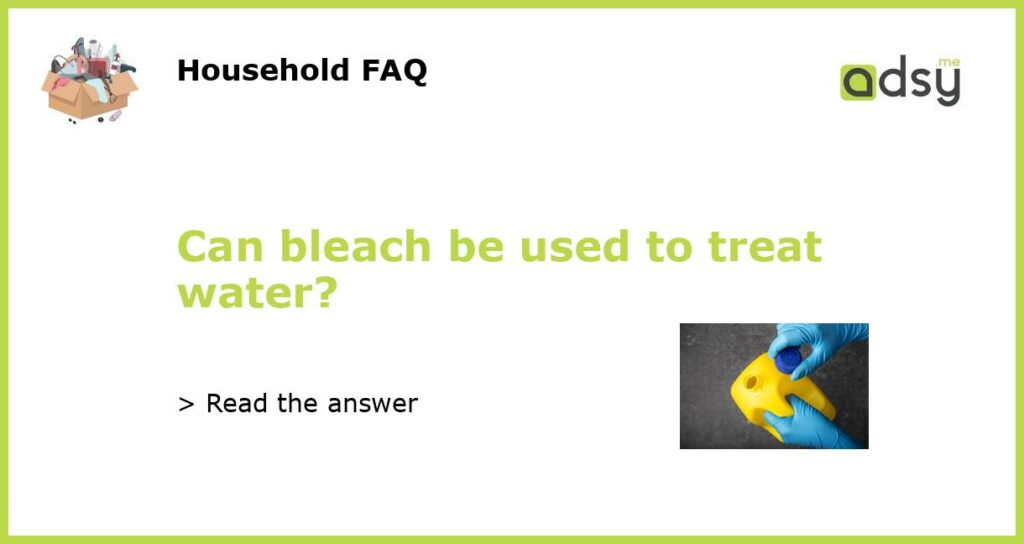What is Bleach?
Bleach is a chemical compound commonly used to remove stains or disinfect surfaces. It is a strong oxidizing agent that can react with various substances, breaking down organic matter and killing bacteria and viruses. The main active ingredient in bleach is sodium hypochlorite, which is a solution of chlorine dissolved in water.
Can Bleach be Used to Treat Water?
Yes, bleach can be used to treat water in emergency situations where clean water is not readily available. It is a common method used by campers, hikers, and survivalists to disinfect water from natural sources, such as rivers or lakes, to make it safe for drinking.
How to Use Bleach to Treat Water
To use bleach to treat water, you should follow certain guidelines to ensure it is done correctly:
- Use unscented bleach, as scented bleach may contain additional chemicals that are not safe for consumption.
- Add bleach to the water at a ratio of 8 drops (or 1/8 teaspoon) per gallon of clear water, or 16 drops (or 1/4 teaspoon) per gallon of cloudy water.
- Mix the water and bleach thoroughly and let it sit for at least 30 minutes before drinking. For cold water, wait for at least an hour before drinking.
- After the waiting period, the water should have a slight chlorine smell. If it does not, add more bleach and wait another 15 minutes before testing again.
- If the water still smells or tastes bad, you should not drink it and look for an alternative source of clean water.
Precautions When Using Bleach to Treat Water
While bleach can be an effective method to treat water, there are certain precautions you should take to avoid potential health risks:
- Do not use scented bleach or bleach that has expired, as it may contain harmful chemicals.
- Only use bleach in an emergency situation when other sources of clean water are not available.
- Do not use bleach to treat water that is visibly contaminated with dirt or debris, as it will not be effective.
- If you are unsure about the safety of the water, consider using a water filter or chemical tablets specifically designed for water treatment.
- Excessive consumption of bleach-treated water may cause nausea, vomiting, and diarrhea. If you experience these symptoms, seek medical attention immediately.
Bleach can be used to treat water in emergency situations, but it should be done with caution and only as a last resort when no other sources of clean water are available. Following the proper guidelines when using bleach to treat water is essential to ensure that it is effective and safe for consumption. When in doubt, seek advice from a healthcare professional or use a certified water treatment method.






